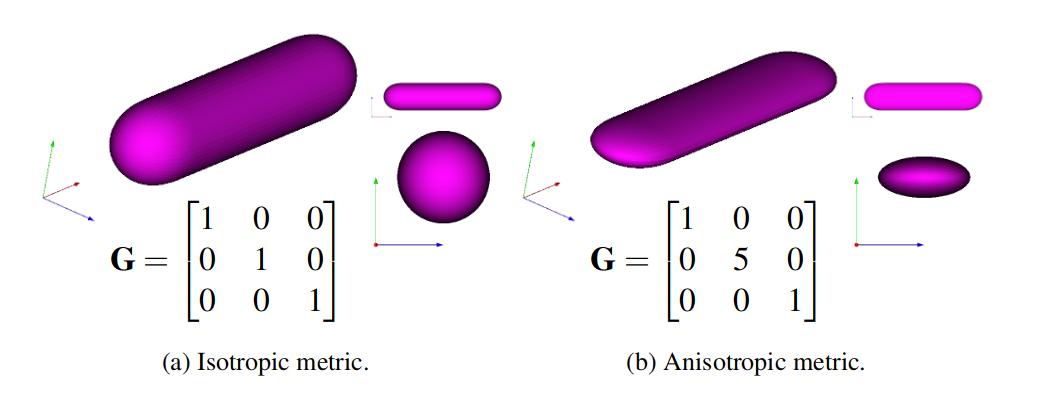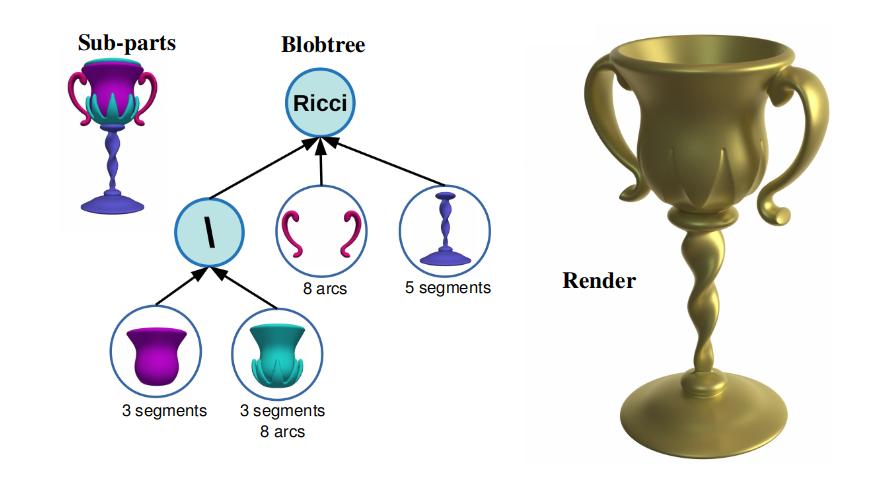Section: New Results
Anisotropic convolution surfaces
Participants : Alvaro Javier Fuentes Suárez, Evelyne Hubert, Cédric Zanni.
Skeletons, as a set of curves and/or surfaces centered inside a shape, provide a compact representation of the shape structure. Due to this property, skeletons have proved useful in many applications that range from shape analysis to 3D modeling and deformation. Convolution surfaces associate radii information to the skeleton and provide a simple way for users to rapidly define a shape. A convolution surface is an implicit surface defined as a level set of a scalar field, the convolution field, that is obtained by integrating a kernel function over the skeleton. This technique allows us to build a complex shape by modeling parts that combine into a smooth surface, independently of the smoothness of the skeleton itself. They also represent a volume with the convolution surface as its boundary and can therefore be combined with other composition operators from implicit modeling frameworks.
We have introduced anisotropic convolution surfaces [12], an extension that increases the modeling freedom by providing ellipse-like normal sections around 1D skeletons. It increases the diversity of shapes that can be generated from 1D skeletons, and reduces the need for 2D skeletons, while it still retains smoothness. We achieve anisotropy not just in the normal sections but also in the tangential direction. This allows sharper and steeper radius variation, and the control of thickness at skeleton endpoints (see Figure 2). The method is applied to skeletons represented by bi-arcs. It allows us to control precisely the orientation of anisotropy thanks to rotation minimizing frames. This work was presented at Shape Modeling International 2019.
|




